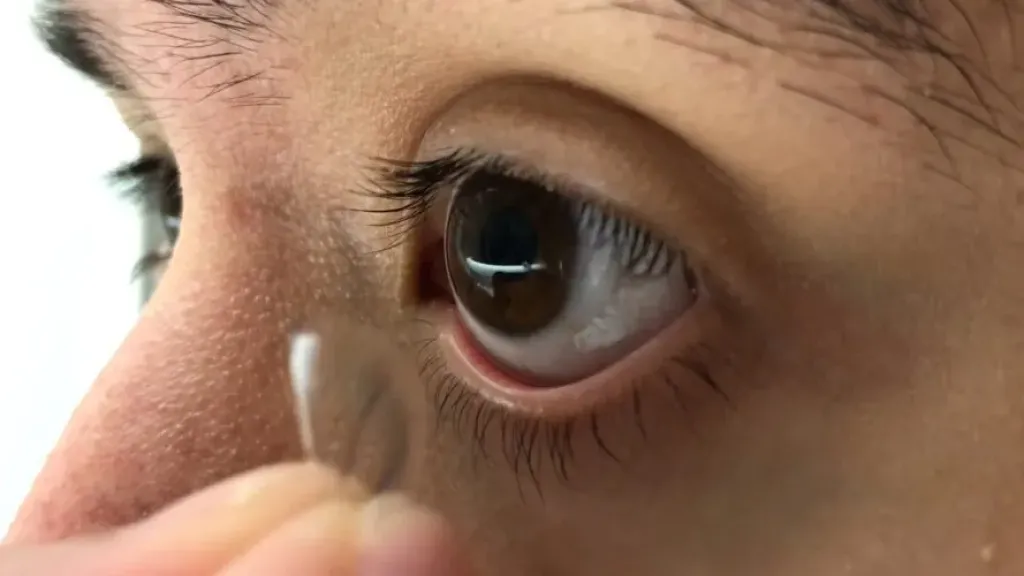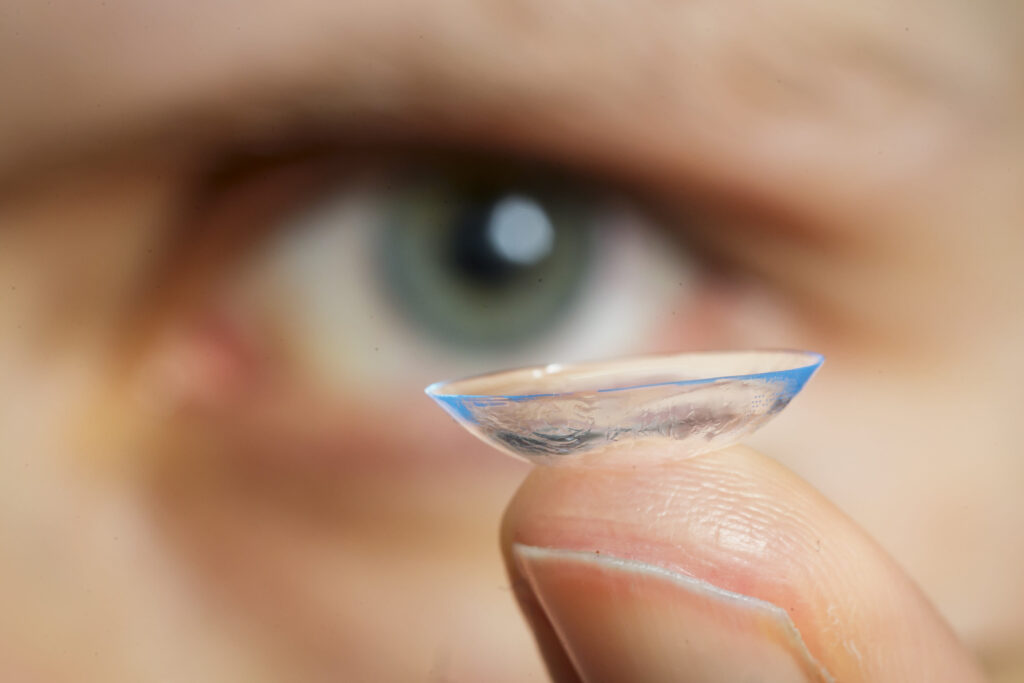One of the most common fears among contact lens wearers is the idea that a contact lens can get lost behind the eye. We’re here to reassure you: it is physically and anatomically impossible for a stuck contact lens to disappear behind your eye. Your eye is protected by a thin membrane called the conjunctiva, which connects your eyeball to your eyelid and prevents anything from slipping behind it.
If a contact lens feels like it’s stuck or has disappeared, it’s likely just trapped under your upper eyelid. This can be uncomfortable, but it’s typically easy to remove, and there’s no need to panic.
Why a Contact Lens Can’t Get Lost Behind Your Eye
The structure of your eye makes it impossible for a contact lens to get lost behind it. The conjunctiva acts like a natural barrier, ensuring that your contacts stay within the front part of your eye. When your lens shifts, it may feel like it’s disappeared, but it’s merely hiding under your eyelid—and that’s completely normal.
This is a common experience for many contact lens wearers. Rest assured, the lens is still in your eye, and with the right approach, you can safely remove it.
How to Remove a Stuck Contact Lens
If you feel like your contact lens is stuck under your eyelid, here are simple steps you can take to remove it:
- Wash Your Hands Thoroughly: Before touching your eye, ensure your hands are clean to avoid introducing bacteria or dirt.
- Relax and Don’t Panic: Stay calm; panicking can cause your eyelids to tighten, making removal harder.
- Blink Frequently: Blinking can help move the lens back into place.
- Use Saline Solution or Rewetting Drops: A few drops of saline solution or rewetting drops can help loosen the lens and provide moisture, making it easier to slide back into position.
- Gently Massage Your Eyelid: Close your eye and gently massage the upper eyelid in a downward motion to help dislodge the lens.
- Look in Different Directions: While keeping your eyelids open, try looking up, down, left, and right to help reposition the lens. Once the lens is visible, you can gently remove it using your clean fingertips.

What NOT to Do When Removing a Stuck Contact Lens
When dealing with a stuck contact lens, avoid these common mistakes:
- Don’t Rub Your Eye Vigorously: This can irritate your eye or damage the lens. It can also make your eyes watery.
- Don’t Use Sharp Objects: Never use tweezers, fingernails, or any sharp tool to remove a contact lens.
- Don’t Panic: Stress can make your eyelids tighten and make removal more difficult. Breathe normally
- Don’t Leave the Lens in Too Long: If you can’t remove the lens after several attempts, don’t leave it in overnight.
If you’ve tried the above methods and your contact lens is still stuck, don’t hesitate to seek professional help from an optometrist. While a stuck lens is typically not a severe issue, there are situations where expert assistance is necessary to protect your eye health and ensure the lens is removed safely and comfortably.
Consider visiting an optometrist if:
You Experience Persistent Pain or Discomfort:
If you’ve made several attempts to remove the contact lens and are left with a feeling of pain, discomfort, or a sensation of something still being in your eye, it’s crucial to see an optometrist. Persistent discomfort could be a sign of a corneal scratch or abrasion, which can worsen without proper care.
Your Eye Becomes Red, Swollen, or Inflamed:
Redness, swelling, or inflammation can indicate an infection or irritation that requires professional attention. Conditions like conjunctivitis (pink eye) or corneal ulcers can develop if a stuck contact lens has caused trauma or trapped bacteria under the eyelid. An optometrist can assess the issue and provide appropriate treatment, such as prescription eye drops or ointments, to alleviate symptoms.
You Notice Blurred or Impaired Vision:
If your vision remains blurry or compromised even after you’ve attempted to remove the lens, this could indicate that the lens or part of it is still in your eye. Blurred vision can also signal damage to the cornea. It needs to be evaluated and treated promptly by an eye care professional.
The Contact Lens Breaks or Tears:
If the contact lens breaks or tears during the removal process, fragments can remain trapped under the eyelid. Attempting to remove these fragments on your own can lead to scratches or infections. An optometrist can safely remove any remaining pieces and ensure your eye is not injured.
Your Eye is Excessively Watery or Sensitive to Light:
Excessive tearing or sensitivity to light (photophobia) can indicate an irritated or scratched cornea. If these symptoms persist, it’s essential to have your eye examined to prevent complications.
You’re Unable to Locate the Contact Lens:
If you feel like the contact lens is stuck but can’t see it in your eye, it may be positioned in a way that makes it difficult to spot. An optometrist can use specialized equipment to locate the lens and remove it safely, avoiding further irritation or damage.
You Have a History of Eye Conditions:
If you have pre-existing eye conditions like dry eye, keratitis, or allergies, your eyes may be more susceptible to irritation and complications from a stuck contact lens. An optometrist can provide personalized care and recommendations based on your specific eye health needs.
You Feel Anxious or Uncertain About Removing the Lens:
It’s normal to feel anxious if a contact lens gets stuck. If you’re unsure or worried about removing the lens yourself, seeing an optometrist can provide peace of mind. They can safely handle the situation and offer guidance on how to manage similar issues in the future.
Why Professional Care Matters
Seeking help from an optometrist ensures that any potential complications are identified and treated promptly. Professional care can prevent minor issues from escalating into more serious conditions, such as infections, corneal abrasions, or long-term damage to your eye. Optometrists have the expertise and equipment necessary to handle stuck or broken contact lenses with precision and care.
Additionally, our optometrists can provide a comprehensive eye exam to assess your overall eye health. They can offer tips on proper contact lens hygiene, fitting, and handling to minimize the risk of future issues.
Keep Your Eyes Healthy with Optical Illusions: An Optometric Practice
At Optical Illusions: An Optometric Practice, we are committed to providing exceptional eye care. Our experienced optometrists use state-of-the-art technology to diagnose and treat eye conditions through comprehensive medical eye exams. Don’t wait until symptoms get worse—schedule your eye exam today and take proactive steps towards safeguarding your vision and health. Contact our team to schedule your appointment at 1 of our 4 conveniently located offices in in San Jose, San Mateo, San Ramon, and Juneau.



